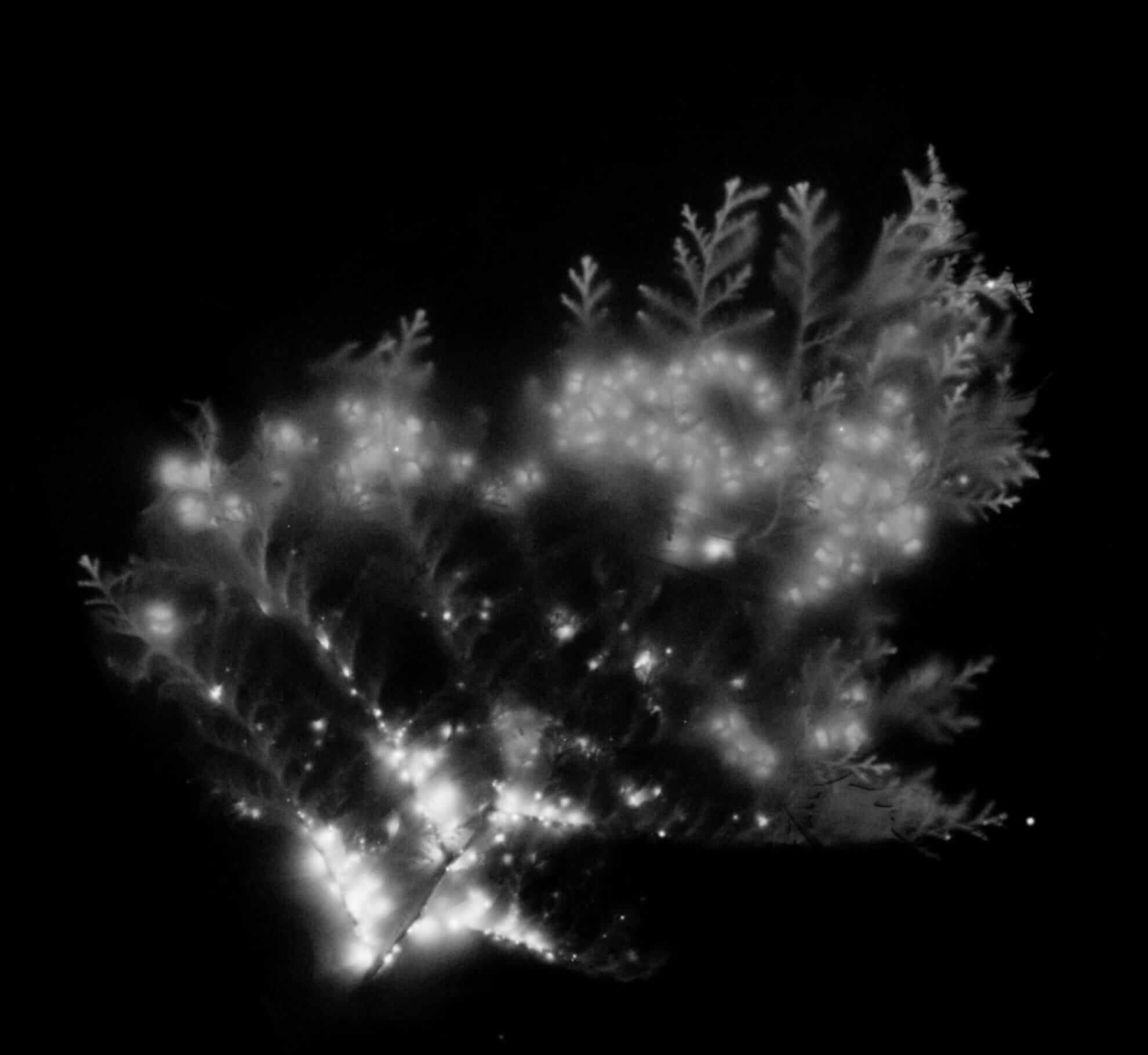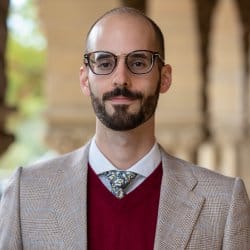Phantomatic Evidence
Masamichi Kagaya is a photographer famous for literally photographing radiation. Autoradiography is used to create an image on an x-ray film, or specially-produced photographic plates, using the energy emitted by radioactive substances. The result you see is a ghostly halo, a phantomatic doppelgänger of cypress leaves and fruits, a species native to Japan. The picture clearly shows signs of a formerly invisible harm: radioactive contamination.
The leaves and fruits seem, for a short instant, to have been brought back to life, haunting us with the proof of an irradiated environment. Kagaya has also used as models: bird nests, dead swallows, snake skins, coins, porous stones at the entrance of a temple, a radiator from the girls’ bathroom of a school, the bark of trees, and a pair of boots. His work, which oscillates between art and science, forces the viewer to rethink the issue of contamination through another lens, where unsuspected things now reveal unfortunate and ubiquitous contamination. We leave the familiar scale afforded by governmental maps or bureaucratic papers to adopt a different kind of view; one of the everyday forms of life and objects contaminated by radioactive caesium, one of the main nuclear pollutants in Fukushima.
While worrisome, these pictures are also strangely beautiful. Looking at the glowing radiation captured by the autoradiograph, one wonders if this is really the culprit that turned rural cities into ghost towns and mountains into areas haunted by the mere presence of animals. Yet, by making contamination visible by such an aspect, I also wonder: what else is being hidden? The evacuee mothers bursting into tears as they fear for the potential genetic dangers associated with chronic exposure to radiation? The farmer who has grown rice on the same plot of land from generation to generation? Or the children wearing long pants and masks in the heat of August to protect themselves against radioactive dust? Like a remorseful ghost that finds finitude in neither life nor death, radiation exposure produces very different forms of risk for different people, troubling citizens in their quest for post-disaster recovery.
The anthropologist, Marilyn Ivy, argues that ghosts, phantoms, or spectres haunt and interest us because they reveal an inability to stabilise meaning or control representation. Against claims that the nuclear disaster is under control or that radiation is now far gone, Kagaya’s pictures act as phantomatic evidence. They embody the perniciousness of contamination, as well as the impossibility of stabilising a precise and singular narrative for a disaster that means so many different things. At odds with the recalcitrance of acknowledging nuclear harms, be it in Japan or elsewhere, the spectre of radiation shown by Kagaya will keep haunting us for millennia, like the soft, almost inaudible murmur of a vengeful ghost.

